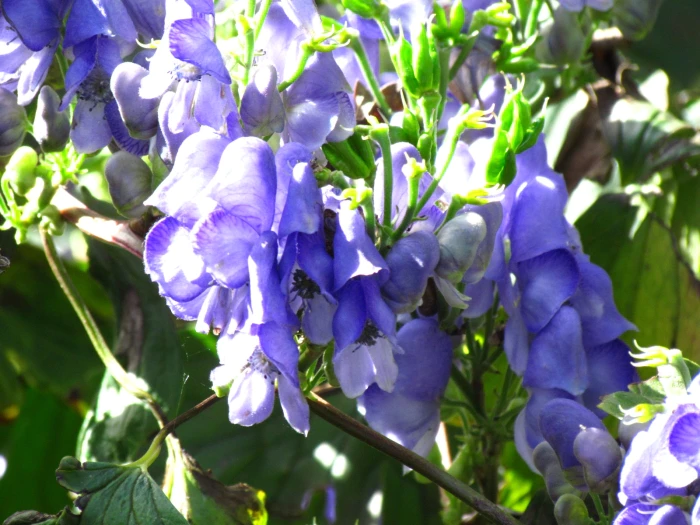Climbing Monk’s Hood
(Aconitum hemsleyanum)
Climbing Monk’s Hood (Aconitum hemsleyanum)
/
/

chuck b.
CC BY 2.0
Image By:
chuck b.
Recorded By:
Copyright:
CC BY 2.0
Copyright Notice:
Photo by: chuck b. | License Type: CC BY 2.0 | License URL: https://creativecommons.org/licenses/by-nd/2.0/ | Uploader: chuck b. | Publisher: Flickr |




Estimated Native Range
Climate Requirements
| • Precipitation | 35" - 42" |
| • High Temp. | 74°F - 89°F |
| • Low Temp. | 21°F - 36°F |
Summary
Aconitum hemsleyanum, commonly known as Climbing Monk’s Hood, is a deciduous perennial vine native to forest margins, scrub areas, and grassy slopes in Central and Southeastern China, Myanmar, and Tibet. It can grow to a height of 6-10 feet (1.8-3 meters) and a width of 1-2 feet (0.3-0.6 meters). The vine is known for its twining habit and its distinctive flowers, which are helmet-shaped and range in color from blue to purple, and occasionally red, blooming profusely in the summer and fall. The flowers are particularly showy and add a vertical interest to garden settings.
Climbing Monk’s Hood is valued for its ornamental flowers and its ability to climb structures such as trellises and fences, making it a popular choice for vertical accents in gardens. It is also used to create natural screens. This plant prefers a sheltered position with support for climbing and thrives in moist, well-drained soil. It is important to note that all parts of the plant are highly toxic if ingested, and care should be taken when handling it, as the toxins can be absorbed through the skin. Despite its toxicity, it has been used historically in traditional medicine with extreme caution. Gardeners should be aware of its invasive potential in some regions and monitor its spread.CC BY-SA 4.0
Climbing Monk’s Hood is valued for its ornamental flowers and its ability to climb structures such as trellises and fences, making it a popular choice for vertical accents in gardens. It is also used to create natural screens. This plant prefers a sheltered position with support for climbing and thrives in moist, well-drained soil. It is important to note that all parts of the plant are highly toxic if ingested, and care should be taken when handling it, as the toxins can be absorbed through the skin. Despite its toxicity, it has been used historically in traditional medicine with extreme caution. Gardeners should be aware of its invasive potential in some regions and monitor its spread.CC BY-SA 4.0
Plant Description
- Plant Type: Vine
- Height: 6-10 feet
- Width: 1-1.5 feet
- Growth Rate: Moderate
- Flower Color: Blue, Purple, Red
- Flowering Season: Summer, Fall
- Leaf Retention: Deciduous
Growth Requirements
- Sun: Full Sun, Part Shade
- Water: Medium
- Drainage: Slow, Medium, Fast
Common Uses
Bee Garden, Bird Garden, Butterfly Garden, Deer Resistant, Hummingbird Garden, Rabbit Resistant, Showy Flowers
Natural Habitat
Forest margins, scrub areas, and grassy slopes
Other Names
Common Names:
Scientific Names: Aconitum hemsleyanum, Aconitum austroyunnanense, Aconitum crassicaule, Aconitum hemsleyanum var. leucanthum, Aconitum sczukinii var. hemsleyanum
GBIF Accepted Name: Aconitum hemsleyanum E.Pritz. ex Diels